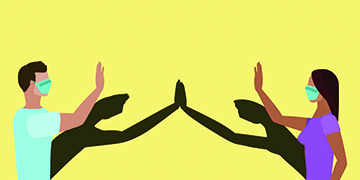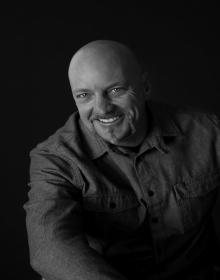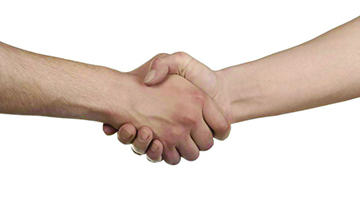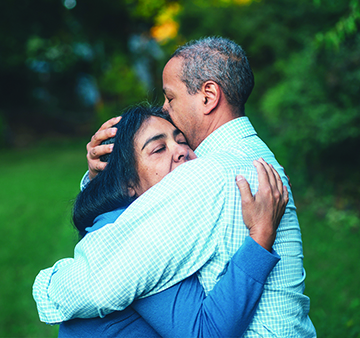“We cannot change anything until we accept it. Condemnation does not liberate, it oppresses.” – Carl Jung
At the onset of 2020, most folks were not familiar with the term social distancing. For all the average citizen knew, it could have meant that your network of friends and associates was so big that it covered vast distances. But, as everyone knows all too well, that’s not what it meant. The result was a pandemic-distressed public that had to quickly train itself to curtail a deep-seated set of automatic social behaviors.

Social Distancing: A little over a year ago, few people knew what this meant. Now, it’s an all too familiar phrase.
Several hallmarks of normal social behavior were pinpointed as instances of human interaction that accelerated the spread of Covid-19. And so, in the spirit of self-preservation, an outgoing society deeply invested in handshakes, hugs and hellos became a sequestered, suspicious, lonely, paranoid populace — resentful of itself for being deprived of itself.
Social distancing restrictions are expected to lift in tandem with the vaccine rollout. There is a pervading hesitancy among many, however, to become relaxed too soon — floating the possibility that another surge in cases could take hold and then the whole mess starts over again. Yet, in the backs of the minds of many, are those blurry, joyous, pre-pandemic memories of exuberant greetings, boisterous gatherings and loving embraces. Lest they be lost to the righteousness of newly-converted germaphobia, a refresher course of America’s beloved social customs is in order.
Handshakes
This universal gesture of goodwill has been in use for millennia and is evidenced in the archaeological record as far back as 500 BC. The handshake exists as a greeting, in one form or another in most cultures the world over and symbolizes alliance and trust between parties. Historians theorize that it was originally designed to show that neither person was carrying weapons in their right hand, with the shaking motion designed to dislodge any knives or other implements hidden up the sleeve. Today, elaborate variations on the palm-to-palm clasp have been invented as specialized greetings between members of an exclusive group or a codice of a secret affiliation. Regardless, this ice-breaker of a social mannerism is an essential conversation starter in the worlds of business and in leisure alike.
Pro tip: Do not deliberately crush the hand of the person you are greeting, as it eradicates the entire purpose of the gesture. Also, grabbing the offered hand and yanking the person toward you as a show of dominance can guarantee they will not be shaking your hand again anytime soon.
Fist Bumps And High Fives

High Five: The high five is another greeting that may have contracted a permanent case of Coronavirus-itis.
While the former could be a toned-down version of the latter, both are internationally renowned gestures of affinity which originated in America. The fist bump first became popular in the 1970s and is thought to be dually appropriated from an incognito version of the Black Panther power symbol and the catalyzing magic ring touch of the Wonder Twins in the popular Super Friends cartoon. Also, the fist bump is the most benign of the hand-based greetings — used exclusively by the germ-conscious such as TV game show host Howie Mandell. Meanwhile, the high-five can be traced back to professional baseball players in the 1950s. As a celebration of success while the world was watching, it was a much-needed salute for triumph during intense moments when a handshake simply would not suffice.
Pro tip: First bumps are just that, a friendly tap so no matter how excited you are to see someone, do not punch their knuckles. To avoid embarrassing misses on high-five attempts, be sure to focus on your target — the center of your acquaintance’s palm. Otherwise, a spirited swat could turn into a flailing flap.
Hugs
Hugs in private between family members, especially mother and child, have been around since the dawn of mankind. Yet, the hug did not become a staple of Western public life until American celebrities and leaders co-opted it from their Latin and European counterparts in the mid-to-late 20th Century. The hug was popularized by entertainers like Sammy Davis Jr. and politicians like Jimmy Carter. Until recently, it was ubiquitous in relaxed, informal social situations and was an unspoken essential between family and friends. The expression, “You look like you could use a hug” is a result of this, because it has been found that the human embrace can provide comfort and reassurance in powerful ways where words and facial expressions fall short. In an article recently published by Time.com, researchers at Carnegie Mellon University’s Laboratory for the Study of Stress, Immunity and Disease reported, “ … [hugs] were associated with an uptick in positive mood markers and a reduction in negative ones; the opposite was true of relationship conflict. And on days when both occurred, people tended to report fewer negative feelings and more positive ones than on days when they experienced conflict but no hugs.”
Pro tip: Don’t be a long hugger unless the occasion is one of intense emotion. A momentary embrace will suffice. Also, the side hug where just one shoulder is offered rather than a full embrace is like shaking hands with just your thumb and forefinger. Go all in or don’t go at all.
Verbal Greetings
Over the last year, folks going about their business in public have been trying to decipher mask-muffled language and the internal moods of their counterparts by just the emotions shown in the eyes. Yet, since talking and yelling (among other mouth-related functions) are the very mechanism through which the disease has been shown to spread, this behavior is under considerable scrutiny. In America, however, the freedoms of self-expression guaranteed by our first Amendment rights are practically ingrained in every citizen’s DNA. It’s only a matter of time before dudes are yelling across lanes of heavy traffic to get the attention of their buddy across the street and tipsy women are shrieking like banshees upon recognizing an old friend in a crowded bar. Spoken language is essential to the human condition and using it at high volumes is a distinct characteristic of Western culture.
Pro tip: For the last year, you’ve been observing the practice of not spitting into the face of the listener when you speak. Try to keep that.




